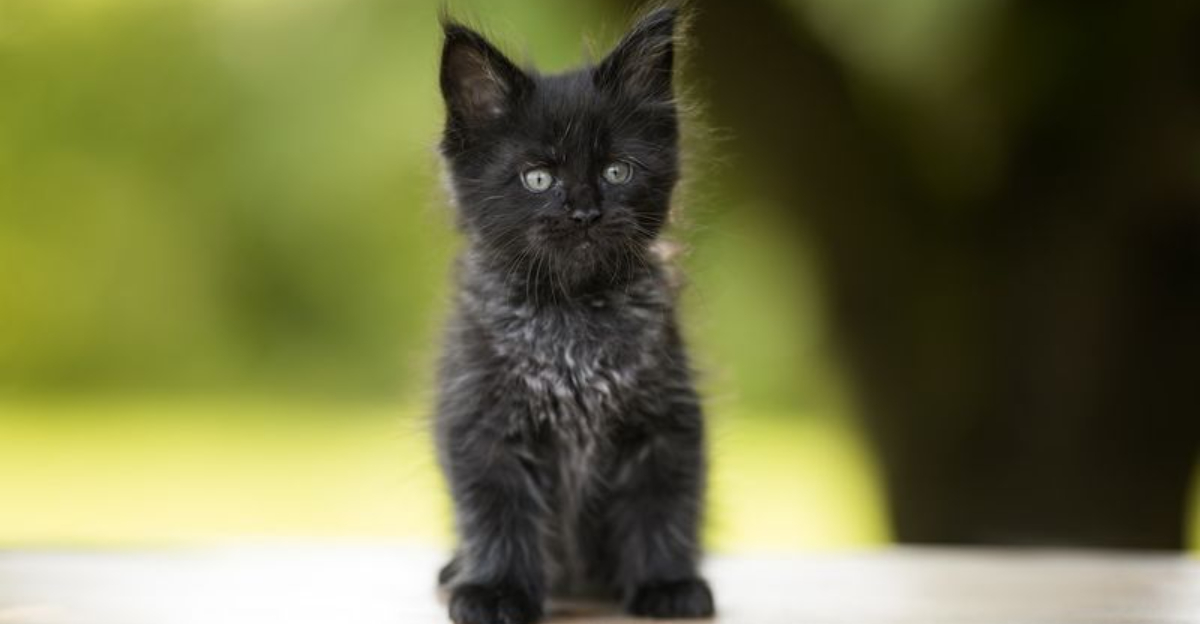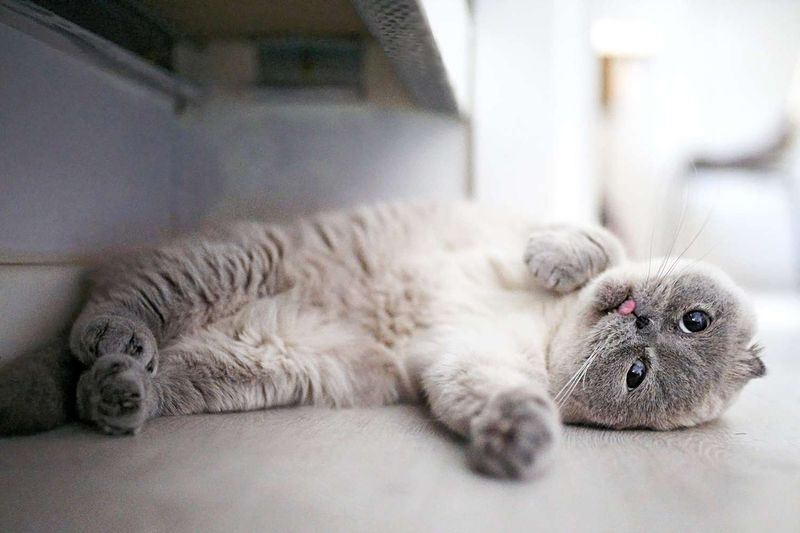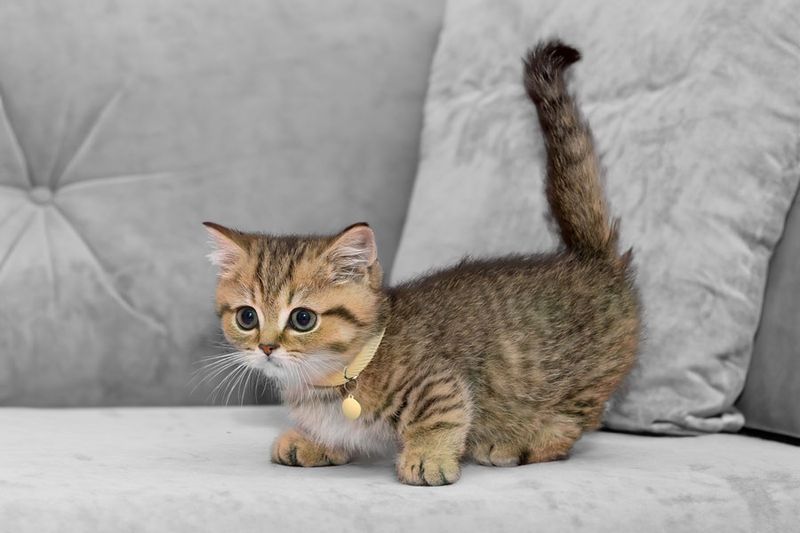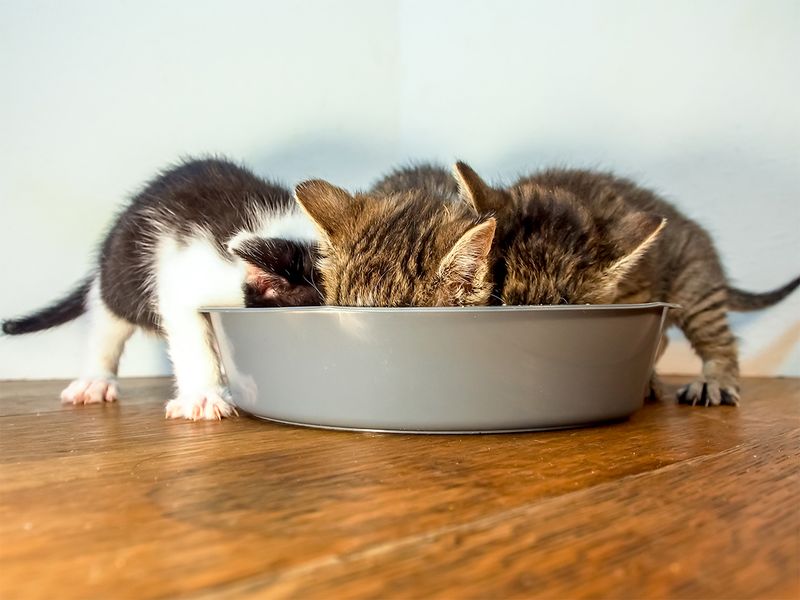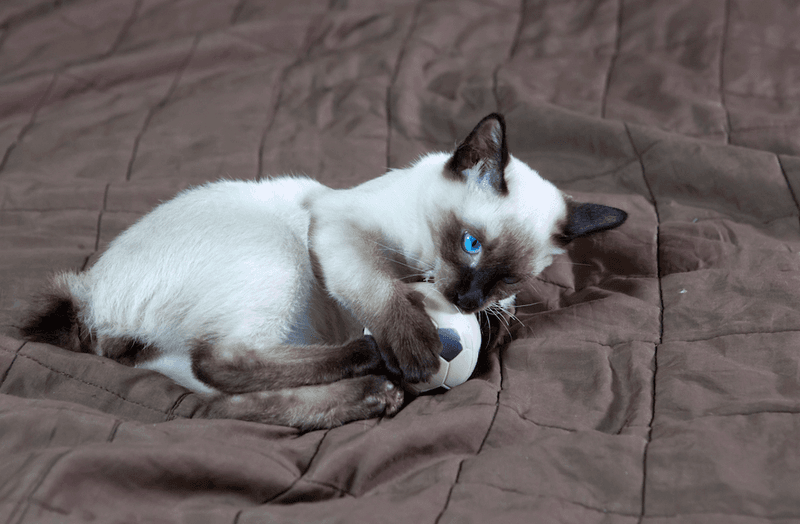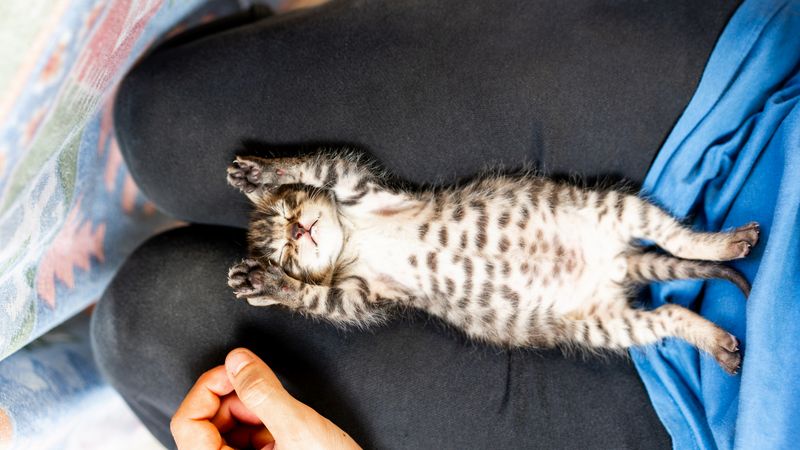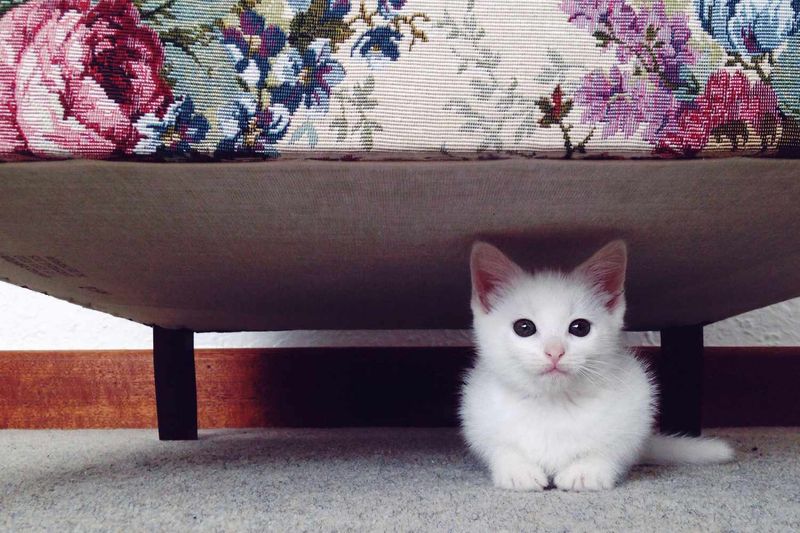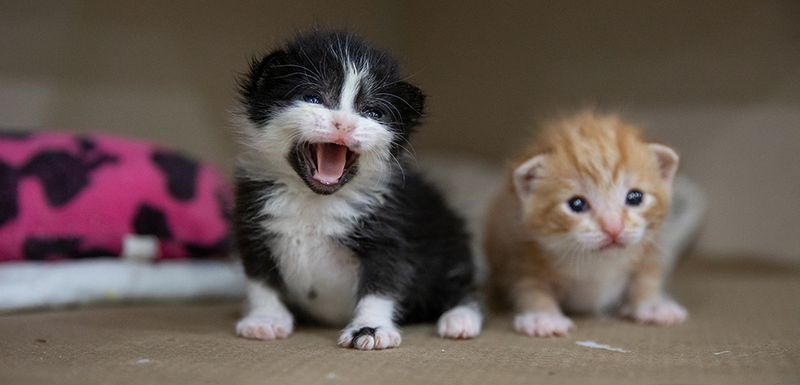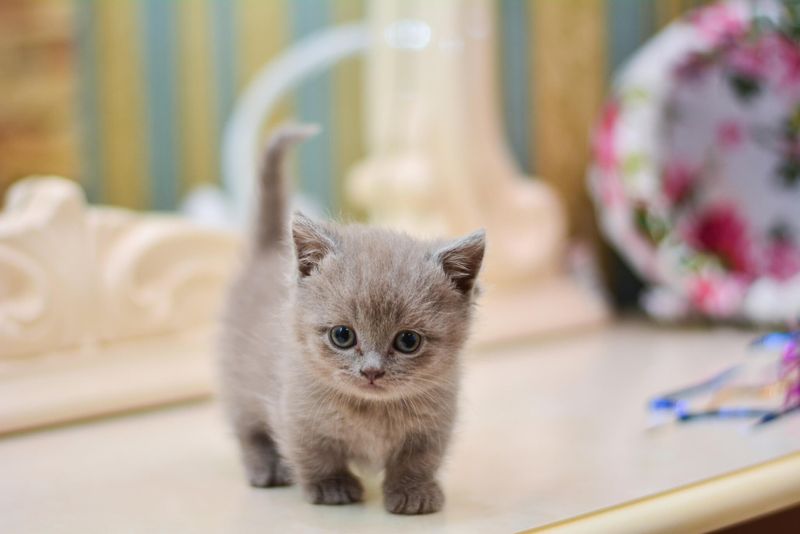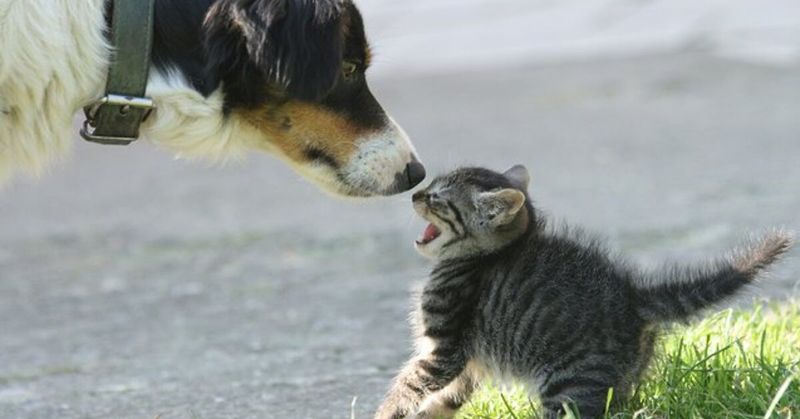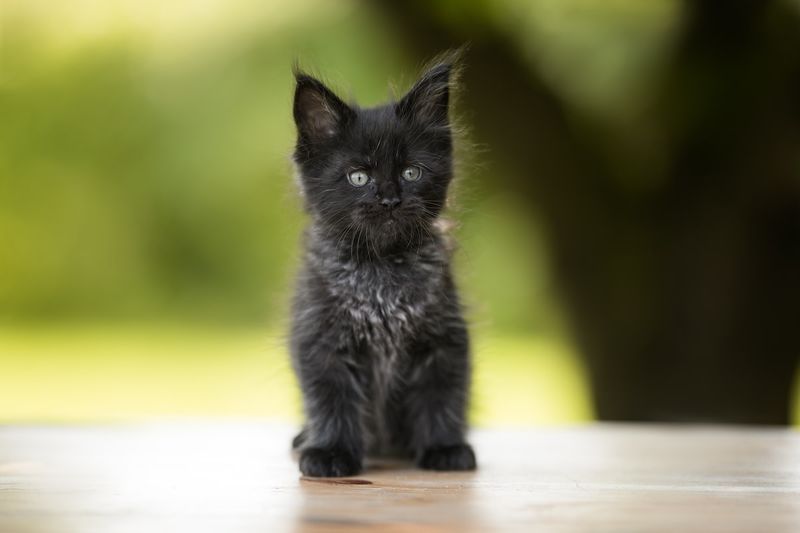📖 Table of Content:
- 1. Adorable Size Makes Everything Cuter
- 2. Perfectly Suited for Small Living Spaces
- 3. Lower Food and Supply Costs
- 4. Easy to Handle and Transport
- 5. Longer Kitten-Like Playfulness
- 6. Stronger Bonds Through Physical Closeness
- 1. Harder to Find When They Hide
- 2. More Vulnerable to Injuries
- 3. Easily Underfoot and Overlooked
- 4. Easy Targets for Other Pets
- 5. More Prone to Escape Through Tiny Openings
- 6. Often Mistaken for Kittens Forever
Tiny cats often leave a big impression thanks to their compact size and endearing personalities. Their playful nature, curiosity, and surprising energy levels can quickly turn any space into their personal playground. Despite their small stature, these cats tend to have bold attitudes and a strong presence in the home.
Some tiny cats come from naturally small breeds, while others may simply mature at a slower pace. Breeds like the Singapura or Munchkin remain petite throughout their lives, making them especially appealing to those living in smaller spaces. However, size doesn’t limit their need for attention, engagement, and regular care.
Welcoming a small cat comes with its own set of perks and potential frustrations. Their agility and ability to squeeze into tight spaces can sometimes lead to unexpected messes or escape attempts. Understanding their behaviors and needs early on can make the transition smoother and more enjoyable for both the cat and its new family.
1. Adorable Size Makes Everything Cuter
Small cats transform ordinary activities into heart-melting moments. When a tiny feline curls up in a teacup-sized ball on your lap or fits perfectly in the palm of your hand, even the most hardened cat skeptics can’t help but smile.
Their miniature paws, petite whiskers, and button noses create an irresistible package of cuteness that constantly delivers joy. Many tiny cat owners report feeling instant mood boosts just by watching their small companions navigate the world.
The proportional cuteness factor extends to everything they do – from drinking water to stretching their little bodies. This perpetual adorableness creates an endless source of delight and photo opportunities that larger cats simply can’t match.
2. Perfectly Suited for Small Living Spaces
Apartment dwellers rejoice! Tiny cats require significantly less territory than their larger counterparts, making them ideal companions for compact living situations. Their smaller frames mean they can exercise fully even in limited square footage.
Space-saving extends to their accessories too. Cat trees, beds, and carriers take up minimal room while still providing everything your petite pet needs. Many tiny cat owners find they can create vertical spaces with small shelves that wouldn’t support bigger cats.
The reduced spatial needs translate to more flexibility in housing options. Unlike some larger pets that require yards or extensive room to roam, these compact companions can thrive contentedly in studio apartments, tiny homes, or anywhere with just enough space for their essentials.
3. Lower Food and Supply Costs
Budget-conscious pet parents will appreciate the reduced expenses that come with tiny cat ownership. Smaller cats simply eat less food – sometimes half of what larger breeds consume – resulting in significant savings over your pet’s lifetime.
Beyond food, other recurring costs shrink proportionally. Litter lasts longer since they produce less waste. Medications, when needed, are often dosed by weight, meaning lower costs for preventatives and treatments. Even toys and beds can be purchased in smaller sizes at lower price points.
Many tiny cat owners report spending 30-40% less annually on their small felines compared to larger breeds. This economic advantage makes pet ownership more accessible without compromising on providing quality care and supplies for your diminutive companion.
4. Easy to Handle and Transport
Traveling with tiny cats feels almost effortless compared to their larger cousins. Their lightweight bodies make vet visits, car rides, and necessary handling significantly more manageable for owners of all ages and strength levels.
Standard carriers feel spacious for these petite passengers, and many tiny cat owners can use stylish totes specifically designed for small pets. This portability opens up possibilities for including your feline friend in more activities and adventures that might be impractical with larger cats.
The ease of physical management extends to grooming sessions, medication administration, and nail trims. Their small frames allow for better control during these necessary care routines, reducing stress for both cat and human while strengthening your bond through positive handling experiences.
5. Longer Kitten-Like Playfulness
Tiny cats often maintain their youthful energy and playfulness well into adulthood. Their small size correlates with a prolonged kittenish demeanor that brings continuous entertainment and joy to their households.
Bouncing, pouncing, and zooming around with toys seems to remain eternally exciting for these compact companions. Many owners of small breeds like the Singapura or Munchkin report that their fully-grown cats still initiate play sessions with the enthusiasm of six-month-old kittens.
This extended playfulness creates a dynamic household atmosphere that keeps everyone engaged. The perpetual kitten-like quality means your tiny cat will likely remain an active, entertaining companion rather than growing into a sedentary adult, providing years of interactive fun and relationship-building play sessions.
6. Stronger Bonds Through Physical Closeness
With their petite frames, tiny cats have a unique ability to bond physically in ways that bigger cats sometimes can’t. They can snuggle up against your neck, settle perfectly on your shoulder, or curl up against your chest, making for cozy, unobtrusive companionship.
This increased physical contact naturally strengthens your emotional connection. Research shows that close physical proximity with pets releases oxytocin – the bonding hormone – in both humans and animals. Tiny cats maximize this effect through their ability to maintain close contact in more situations.
Many small cat owners report feeling especially chosen when their petite companion selects them as a perch or sleeping spot. This mutual comfort creates a unique relationship dynamic where the cat becomes almost an extension of yourself – a pocket-sized companion who’s always within reach for affection.
1. Harder to Find When They Hide
Those adorable diminutive dimensions become considerably less charming when your tiny feline decides to disappear. Their ability to squeeze into impossibly small spaces – inside box springs, behind appliances, or within furniture – can trigger panic when you can’t locate your pet.
Owners report discovering their small cats in astonishing locations: inside pillowcases, within cabinet drawers they somehow opened, or nestled deep within closets. This hiding talent becomes especially problematic when you’re running late or need to administer medication.
The stress of searching for a well-concealed tiny cat often leads owners to implement “cat checks” before closing doors or leaving home. Many develop systems like shaking treat containers or keeping GPS trackers on collars to help locate their miniature escape artists during their impressive vanishing acts.
2. More Vulnerable to Injuries
The delicate frames of tiny cats come with concerning fragility. Their smaller bones, lighter weight, and diminutive size make them significantly more susceptible to injuries from falls, rough handling, or encounters with larger pets.
Everyday household activities require extra caution. Reclining chairs, closing doors, and even stepping backward become potential hazards for these small companions who might be underfoot without being noticed. Many owners install baby gates to create safe zones where their tiny cats can’t accidentally be stepped on.
Temperature sensitivity also increases with smaller body mass. Tiny cats lose body heat faster and may struggle to maintain warmth in cooler environments. This vulnerability necessitates more vigilant supervision and proactive safety measures throughout your home to protect your petite pet from common household dangers.
3. Easily Underfoot and Overlooked
Living with a tiny cat requires developing a constant awareness of where you step, sit, and place items. Their silent movements and small stature make them easy to accidentally step on, sit on, or close doors on – creating dangerous situations for your pint-sized pet.
Many tiny cat owners develop what they call the “shuffle walk” around their homes – never lifting their feet completely off the floor to avoid accidentally stepping on their small companions. Night time bathroom trips become particularly hazardous when your barely-visible pet decides to weave between your feet in the darkness.
The risk extends to visitors who aren’t accustomed to watching for miniature felines. Hosting guests often requires specific warnings and introductions to ensure everyone remains mindful of the small family member who might be exploring underfoot or napping in unexpected places.
4. Easy Targets for Other Pets
Multi-pet households face unique challenges when tiny cats enter the mix. Even well-meaning larger cats and dogs may inadvertently harm small felines during play sessions that would be harmless with larger cats.
Predatory instincts sometimes activate in other pets when they encounter extremely small cats, whose movements trigger chase responses. This natural behavior requires vigilant supervision until all animals adjust to each other’s presence and establish appropriate interaction patterns.
Creating safe zones becomes essential for tiny cat owners with multiple pets. Many install baby gates, cat shelves, or small-entry hideaways where only the tiny cat can access to retreat when feeling overwhelmed. This management adds complexity to multi-pet households but remains necessary to protect your smallest family member from overzealous playmates.
5. More Prone to Escape Through Tiny Openings
Security becomes a major concern with cats that can squeeze through openings the size of their skull. Tiny cats excel at finding and exploiting the smallest gaps in windows, doors, or screens that would never accommodate larger felines.
Their escape artist tendencies mean constantly checking for potential exit points around your home. Many owners discover their small cats have disappeared through holes they never noticed – behind appliances, through vents with missing covers, or gaps under doors that seemed impossibly narrow.
This escape potential creates significant stress when moving to new homes or during renovations. Tiny cat owners often implement multi-layered security systems, including special screens, door sweeps, and entry vestibules to prevent their miniature Houdinis from slipping away into potentially dangerous outdoor environments where predators and traffic pose serious threats.
6. Often Mistaken for Kittens Forever
The perpetual mistaken identity of your fully-grown tiny cat becomes surprisingly frustrating over time. Well-meaning visitors, pet sitters, and even veterinary staff may constantly refer to your adult cat as a kitten, sometimes questioning if you’re feeding them properly despite their naturally small size.
This misperception extends beyond casual comments. Some people attempt to handle adult tiny cats with the same roughness appropriate for playful kittens, not realizing they’re dealing with mature cats who may have different tolerance levels. Others may offer unwanted advice about nutrition, assuming your cat is underweight rather than naturally petite.
Explaining your cat’s adult status becomes a recurring conversation that tests your patience. Many tiny cat owners report feeling defensive about their pet’s size and having to repeatedly educate others that some cats simply remain small throughout their lives due to genetics or breed characteristics.
